Based in the Black Forest region in Germany, Jörg Schauer has been making watches for 30 years. With his two watch brands, Schauer and Stowa, he has built up quite a following online. Here’s a look back at where it all started and what Schauer is doing in 2020.
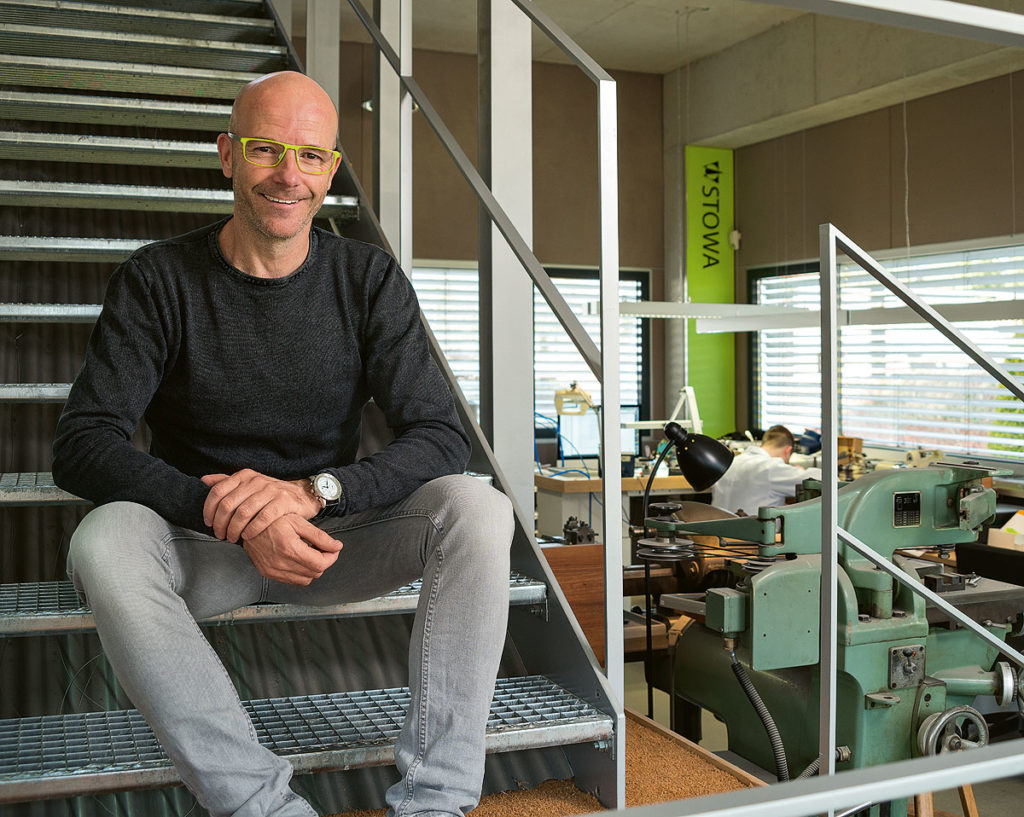
WT: You began making watches 30 years ago. How did you get started?
JS: I originally trained as a goldsmith. After my apprenticeship in the late 1980s, I spent a little over a year on [the Spanish island] Lanzarote, where I worked in a jewelry shop that also sold watches. That’s how I discovered my passion for wristwatches. I returned to Germany around 1990, when the mechanical watch boom was just beginning. I went to many watch fairs and got to know an increasingly large number of collectors. Many of those aficionados owned interesting movements: some equipped with dials, others without dials, and all lacking cases. Time after time, one or another of those collectors would ask me to build a new case for a cherished movement.
WT: Why did so many connoisseurs have movements without cases?
JS: Many people in the 1980s assumed that the mechanical watch was obsolete, so a great many watch owners had their gold cases melted down. More than a few of the “orphaned” movements were truly excellent products from manufacturers like Rolex, Patek Philippe, Vacheron Constantin and IWC. Some were highly complicated calibers, like perpetual calendars or minute repeaters. Sometimes a client owned a complete watch but wanted to have its movement installed in a different case.
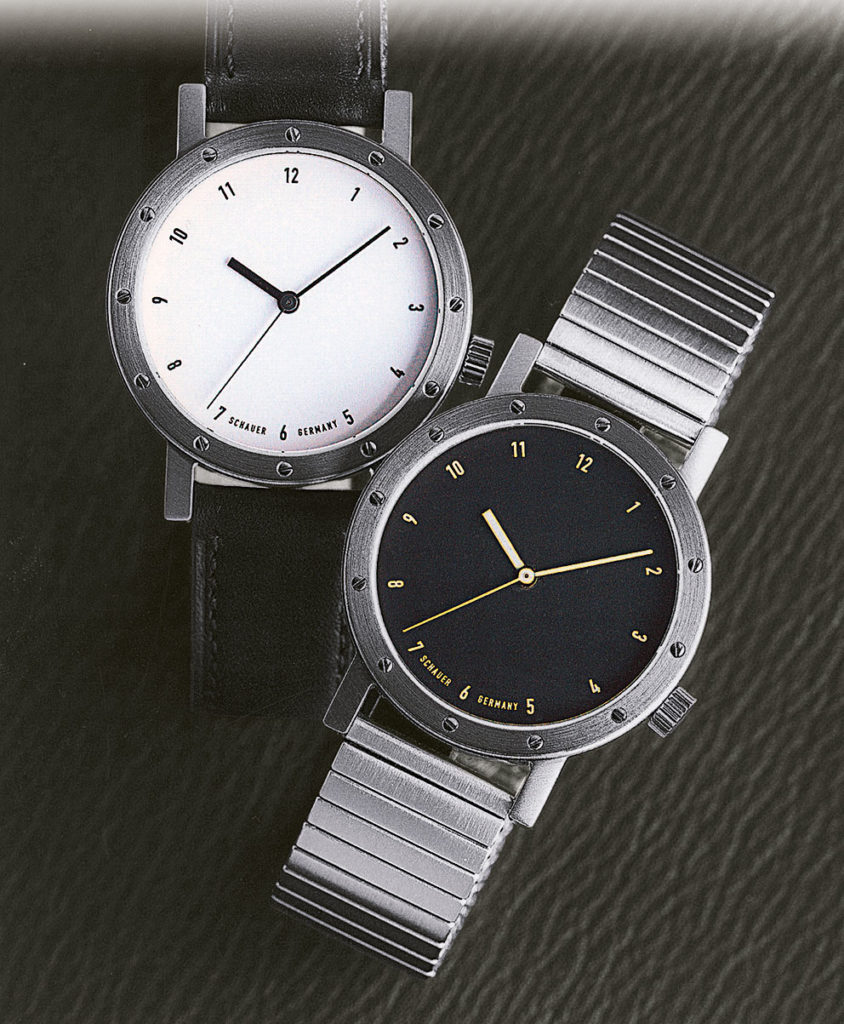
WT: How did it come about that you established your own brand, Schauer?
JS: Up to 1997 or thereabouts, I had made approximately 400 unique timepieces in the way I just described. But as the boom in mechanical watches continued, from the mid-1990s onward, it became increasingly more difficult for me to get individual components from good suppliers, for example, sapphire crystals in various shapes and sizes. In order to be able to purchase components in larger quantities, I had to start serial production. I had already experimented with different cases at that time and this resulted in the Schauer case, with 12 screws in its bezel, which would later come to characterize my brand. I developed this further and then built my first chronograph.
WT:When did you move on to fabricating your first small series?
JS: That was in 1997 with Edition 1, a chronograph encasing a modified Valjoux 7750. It had a white dial with asymmetrically arranged subdials.
WT: How did you end up owning the Stowa brand?
JS: I had always been impressed by the large pilots’ watch that Stowa built for the German Air Force during World War II. It put Stowa in good company: IWC, Wempe, Laco, and A. Lange & Söhne all built watches for German military pilots. Stowa didn’t have any complicated watches in its portfolio, but all of its timepieces were really beautiful. That impressed me and I immediately saw an opportunity to offer good, handsome watches at an attractive price. I bought the brand in 1996, and one year later I presented the first watches at the Basel trade fair to mark Stowa’s 70th anniversary.
WT: What was the idea behind Stowa?
JS: To offer good, affordable watches, initially for the German market. It also had something to do with pragmatism. I had numerous fans among Schauer’s clientele who owned 10 or more watches. Many of those aficionados came by frequently and were eager to chat with me. The logical step in that situation was to collaborate with a brand like Stowa. This enabled me shift the focus away from me as an individual and onto the brand per se.
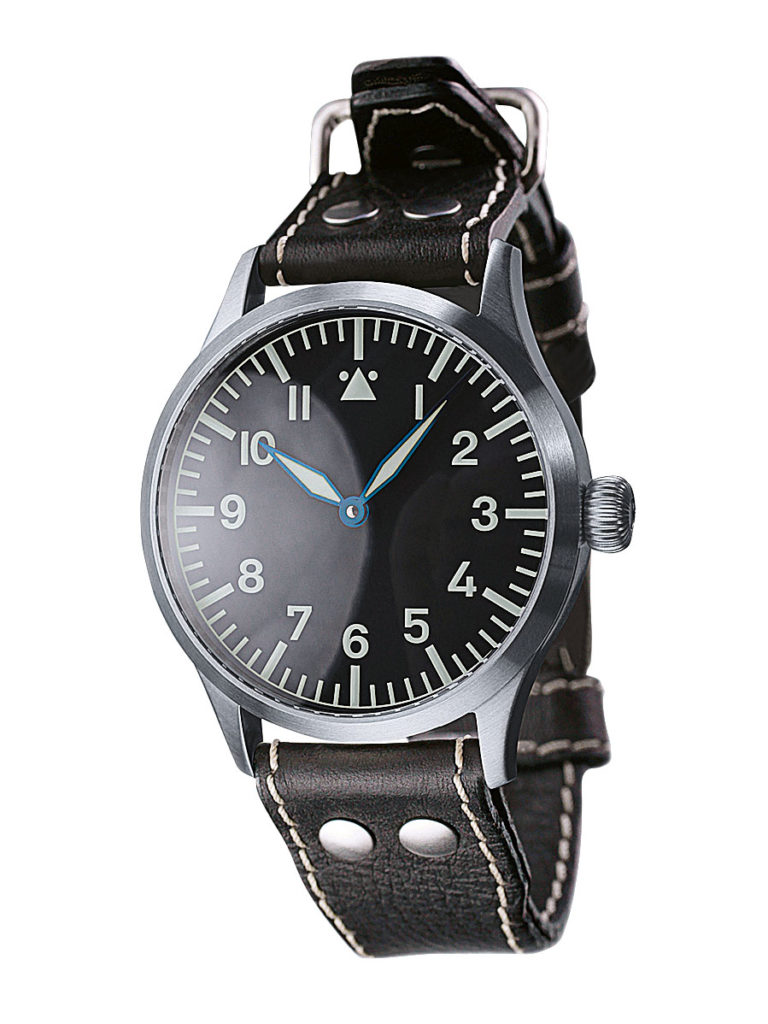
WT: How did the coexistence of Schauer and Stowa evolve?
JS: Schauer was the center of attention during the first nine or 10 years. The ratio was about 90 to 10. Changes in the market in the mid-noughties compelled me to think about how I wanted to orient myself in the future. The result was that I finally began selling Stowa watches directly via the internet.
WT: You were among the first to initiate online sales. How did that come about?
JS: Around 2005, I had about 40 doors in Germany. But then the large corporate groups began to emerge and they increasingly pressured retailers not only to carry their brands, but also to purchase large numbers of their brands’ watches. The situation became increasingly difficult for independent labels like mine. I also had the feeling that dealers weren’t always able to provide optimal advice to customers who were interested in Schauer or Stowa. I concluded that I myself could take better care of my customers and their special wishes than a dealer can. So I started my online shop in 2006.
WT: Stowa quickly became much stronger than Schauer after the online shop was launched. Is that right?
JS: Yes. Stowa watches were in great demand thanks to their historical pilots’ watch design and their good price-performance ratio. I still accepted orders for Schauer even after the start of the online shop with Stowa, but I had so much work to do with Stowa that delivery times for Schauer watches became longer and longer. I had no choice but to disappoint some customers. And the number of Schauer watches became smaller and smaller. The ratio between Schauer and Stowa watches reversed completely in just a few years’ time. Stowa had accounted for about 10 percent when the online shop was launched in 2006, but five years later Stowa’s share had grown to 90 percent.

WT: You rely on retro design with Stowa, but not with Schauer. How do you view the retro theme?
JS: Retro design covers the largest part of the market and this situation will probably remain unchanged for the foreseeable future. But at Stowa I’ve always tried to do something contemporary in addition to retro aviation design. [For example,] my collaboration with Harmut Esslinger resulted in very modern timepieces like the Rana, the DIN pilots’ watches and the new Antea Dynadot. The Schauer brand, on the other hand, had always been about finding my own style. That style developed gradually from what I have done.
WT: How have customers in general changed over the last 30 years?
JS: The rediscovery of mechanical watches was the main focus in the 1990s. There was strong demand for interesting movements and complications, as well as for outstanding craftsmanship as reflected, for example, in the construction of the cases. Prominent individualism played the leading role until the mid-1990s. Many customers were happy to find special models at independent manufacturers like mine or at other small manufacturers like Temption or Sothis. Owning those brands’ watches enabled their wearers to set themselves apart from friends who wore Rolexes or Omegas. The big brands have grown more and more powerful since 2005 or thereabouts: on the one hand, they’ve put their traditional icons in the spotlight. And on the other hand, they’ve invested heavily in their brand identities. This has enabled them to attract progressively more attention.
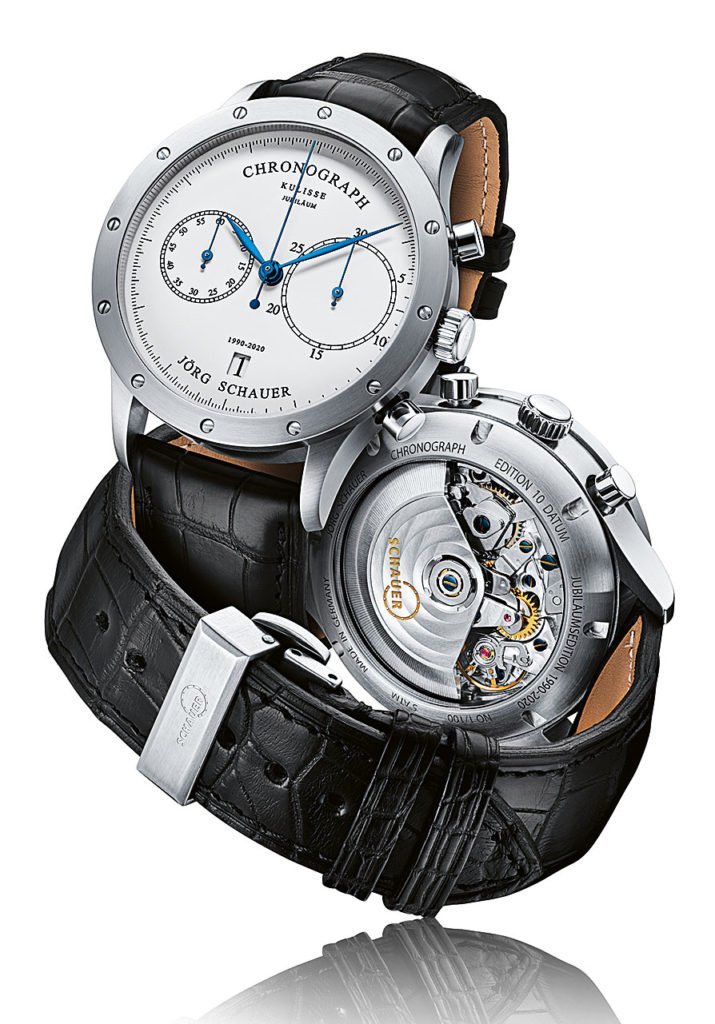
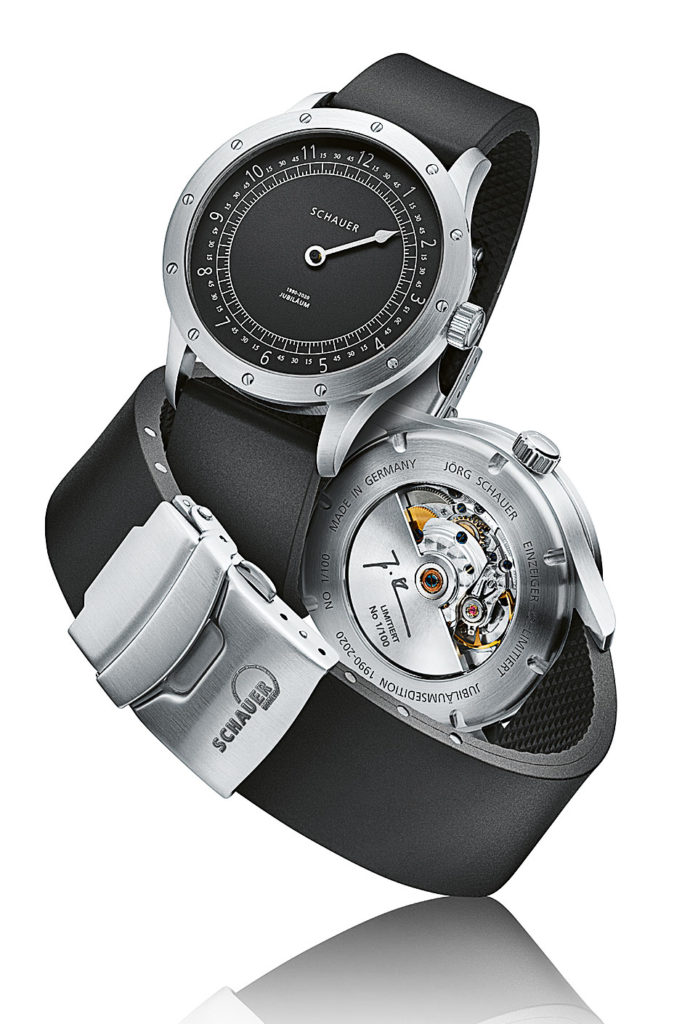
WT: And today?
JS: The big brands are omnipresent and you see the same boutiques everywhere. This has prompted a budding countermovement. For the past year or two, I’ve noticed that many customers are again placing more value on individualism. Small brands are becoming more attractive. I feel that the mega hype surrounding the big brands is subsiding, not least because prices have gone through the roof. Watch buyers insist on more variety, and the big brands alone cannot grant every customer’s wish.
WT: Starting with the anniversary, do you want to focus more on the Schauer brand again?
JS: The anniversary comes at just the right time to again call attention to the special design vocabulary and the high quality of Schauer watches. I’m firmly established with Stowa, which will always continue to offer interesting new models. But with Schauer, I can act much more freely when it comes to ideas, design and themes.
WT: What models are you bringing to the anniversary?
JS: There will be two elite special editions, limited and individually numbered, of 130 and 160 timepieces, respectively. One is the Kulisse Edition 10 chronograph with its asymmetrical dial arrangement. It ranked among the most popular Schauer watches: my classic, so to speak. Now I’ve adapted it to suit contemporary tastes. The new bezel is narrower and I’ve added a date display at the 6. The second anniversary model is my single-handed watch, which I already had in my portfolio early on. A lone pink gold or platinum hand, which I fabricate myself, points from the dial’s center to a peripheral minute circle, which is finely calibrated so the time can be read to the nearest five minutes.

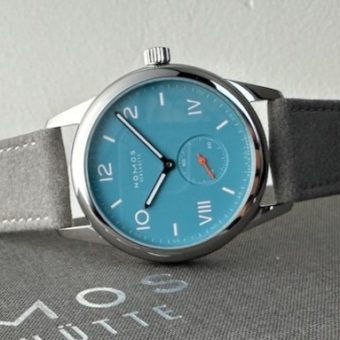
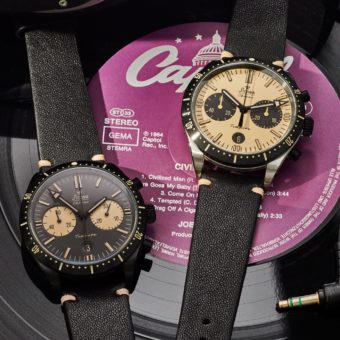
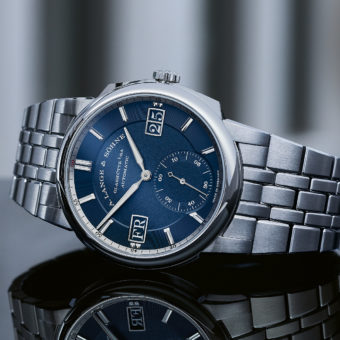
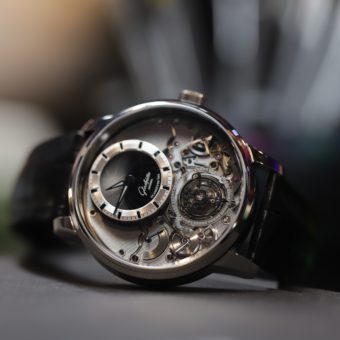
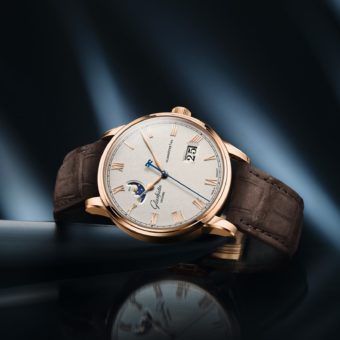
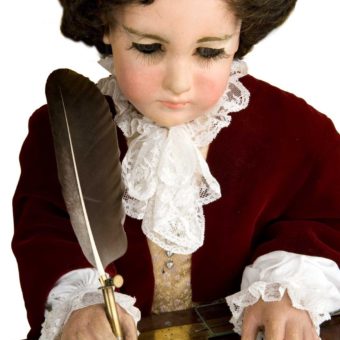
Mr. Schauer,
I am interested in purchasing one of our single hand watches.
Thank you!
Robert